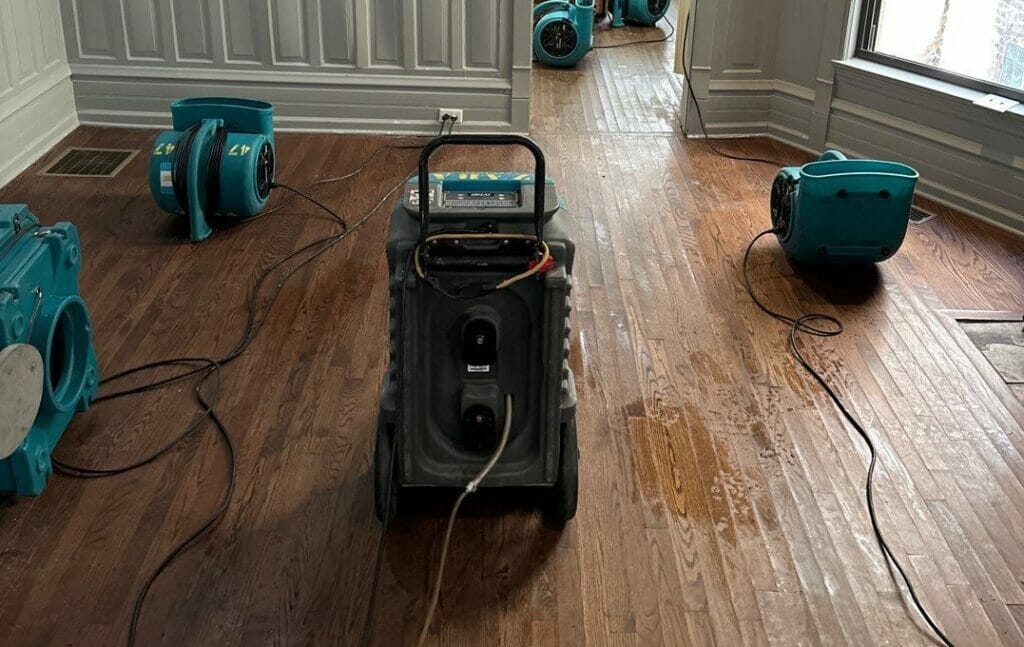Water damage in your home can feel like a catastrophe, turning your safe haven into a soggy nightmare. However, with the right approach, you can transform this disaster into a distant memory, restoring your home to its former dry and cozy state. This comprehensive guide will outline the essential steps to take immediately after experiencing water damage, and introduce a groundbreaking secret weapon to help prevent future issues.
Identifying the Source: The First Critical Step
The initial step in managing water damage is pinpointing where the water is coming from. This could be as apparent as a burst pipe in the basement or as hidden as a slow leak behind the walls. Quick identification is crucial as it helps prevent further damage and accelerates the drying process. Sometimes, the source of the leak might not be where the water accumulates, so thorough investigation is necessary.
Quick Tip:
Use your senses to detect the source of the water. Often, a hissing sound or a noticeable drop in water pressure can lead you right to the issue.
Minimizing the Damage: Immediate Actions
Once you’ve identified the source of the water, the next step is to minimize its impact. This includes removing electronics and other valuable items from the affected area, soaking up standing water with towels or a wet-dry vacuum, and opening windows to facilitate air circulation and drying. If the water is from a contaminated source, such as sewer backup, avoid contact and wait for professionals.
Fun Fact:
Did you know that mold can start to grow within 24-48 hours in a moist environment? Acting swiftly is crucial to prevent mold and other related problems.
Contacting a Professional: Knowing When It’s Time
While minor water damage might seem manageable, it can often be more complex beneath the surface. Water can seep into subfloors, behind walls, and into other hidden areas, creating long-term problems like mold and structural damage. Professionals have the tools, training, and expertise to thoroughly assess and effectively restore the damage, ensuring your home returns to a safe, dry state. Moreover, their capability in efficient flood damage cleanup is crucial for quickly mitigating water impact and preventing further deterioration of your property.
Remember:
Ensure that the water damage restoration service providers are certified through a reputable industry association, and check their track record for reliability and customer satisfaction.
The “Secret Weapon”: A Game-Changing Tool in Water Damage Prevention
To not only restore your home but also strengthen it against future water damage, consider our secret weapon—the 313 taper seal service saddle. This innovative product, available at http://blairsupplyusa.com/ website, is designed to provide a robust, durable seal in plumbing systems, significantly reducing the risk of future leaks and bursts, particularly in high-pressure scenarios. By integrating this high-quality solution from a trusted supplier, you can ensure a more secure and resilient home infrastructure.
How It Works:
The 313 taper seal service saddle employs a precision-engineered taper mechanism that tightens the seal as water pressure increases, ensuring a consistently tight fit and preventing leaks before they can start.
The Restoration Process: Overview of What to Expect
The process of restoring your home after water damage involves several key steps: water removal, drying, cleaning, and repair. These steps are designed to ensure your home is not only repaired but fully restored to its pre-damage condition, with attention to both functionality and aesthetics.
Step-by-Step:
- Water Removal: Specialists use industrial-grade pumps and vacuums to remove standing water from carpets, floors, and other surfaces.
- Drying: Using powerful dehumidifiers and fans, professionals will thoroughly dry the affected areas. This step is vital to prevent the growth of mold.
- Cleaning: This includes disinfecting and deodorizing materials affected by water to prevent odors and bacterial growth.
- Repair and Restoration: Damaged drywall, flooring, and other materials are repaired or replaced. This may also involve painting, refinishing, and other cosmetic fixes to return your home to its original state.
Proactive Measures: Securing Your Home Against Future Water Damage
In addition to using the 313 taper seal service saddle, there are several proactive steps homeowners can take to safeguard against future water damage:
- Regularly inspect plumbing systems and appliances for signs of wear and leaks.
- Install water detection alarms in key areas like basements, bathrooms, and under sinks.
- Consider smart home water monitors that can detect irregularities in water usage and shut off water in case of a detected leak.
Securing Your Sanctuary
Water damage can be a formidable challenge, but with the right steps and strategic use of innovative products like the 313 taper seal service saddle, it can be efficiently managed and even prevented. By acting quickly, leveraging professional help, and employing preventive measures, you can move from disaster to dry, reclaiming your peaceful abode. Embrace these practices, and not only will you recover from the current damage, but you’ll also protect your home for the future.
Stay in touch to get more updates & news on Internal Insider!










